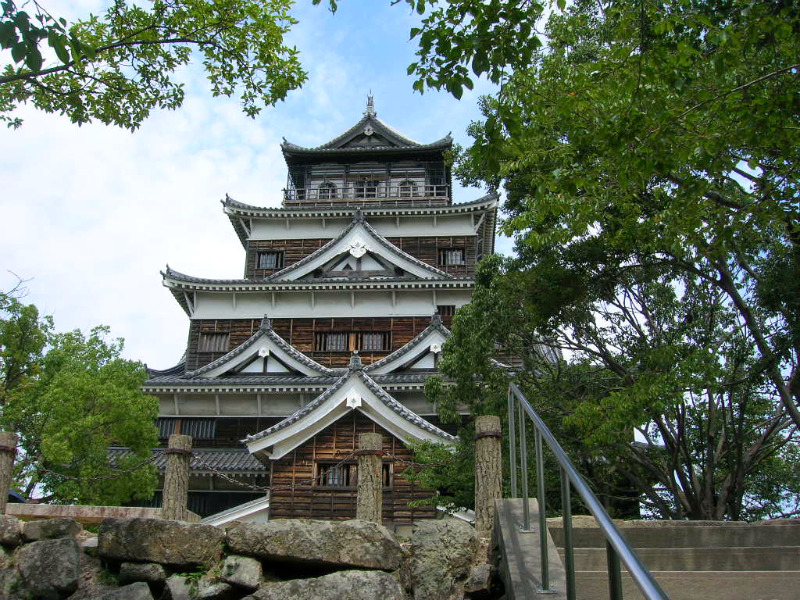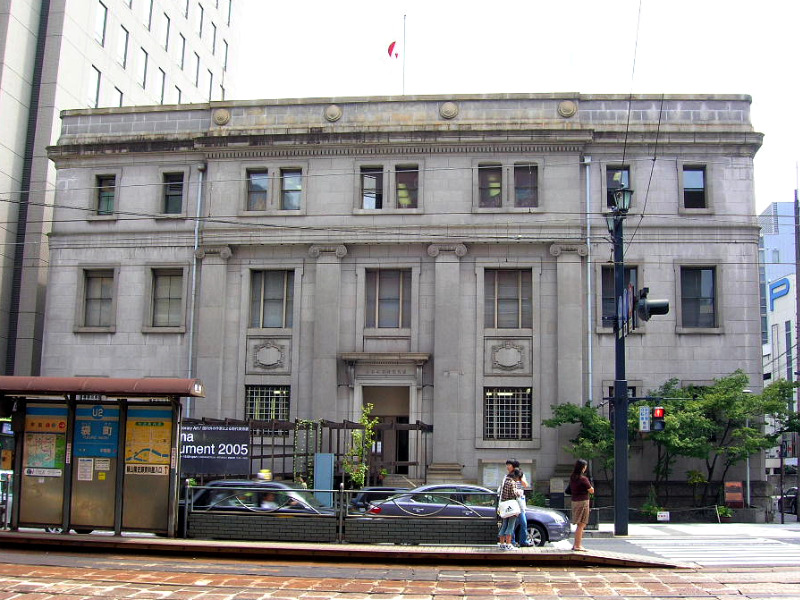The mere name of Hiroshima (pop. 1,113,000) usually brings to Western minds images of atomic devastation and its terrible after-effects. Indeed, 6 August 1945 will remain a tragic memorial day for many generations to come, as the first nuclear bomb ever used on humankind.
Most (foreign) visitors to Hiroshima come with the hope to understand better what happened on that tragic day, by visiting A-Bomb Dome, Hiroshima Peace Memorial Museum, A-Bomb Museum (admission ¥50) and the surrounding Peace Memorial Park.
Indeed, the bomb ravaging most of the other historical buildings, there aren't many traditional sights left, apart from the ferro-concrete reconstruction of Hiroshima castle (destroyed by the bomb and rebuilt in 1958).
For a change of mind from atomic devastation, have a stroll around the 17th-century Shukkei-en Garden (縮景園), a few minutes walk east of the castle, or visit one (or both) of Hiroshima's art museums. In the same compound as Shukkei-en, the Hiroshima Prefectural Art Museum has a collection of Asian decorative arts, as well as paintings by artists with a connection to Hiroshima. There are also a few Western masters who have influenced contemporary Japanese art, such as Dali and Picasso.
Just south of the castle, the Hiroshima Museum of Art would be the main reason to stop in Hiroshima (for art lovers, at least) besides memorials to the atomic bomb. The permanent exhibition boasts over 200 paintings by celebrated French or France-based artists like Delacroix, Degas, Manet, Monet, Renoir, Pissaro, Cézanne, Van Gogh, Toulouse-Latrec, Gauguin, Matisse, Picasso, Braque, Modigliani and Chagal, just to cite a few. Japanese painters from the same period are also represented (Kuroda, Okada, Fujishima, Kishida, Saeki, and so on).
 Hiroshima Castle
Hiroshima Castle
 Old Bank of Japan building, Hiroshima
Old Bank of Japan building, Hiroshima
The Atomic Bomb
Although the A-Bomb killed approximately 90,000 people instantly or shortly afterwards and possibly as many in the following years from the aftereffects, the horror should be relativised in comparison to other events of the Second World War. The biggest carpet bombing raid on Tokyo on 10 March 1945 left 110,000 people dead. The three month of intense figting in Okinawa resulted in the death of 110,000 Japanese soldiers and 130,000 civilians - while Americans lost as little as 13,000 lives.
The A-Bomb on Nagasaki caused 50,000 fatalities and an additional 30,000 in the later years. The total death toll of WWII was no less than 2,5 million Japanese lives and millions more soldiers and civilians killed by Japanese troops throughout Asia.
The A-bomb dropped on Hiroshima used uranium, while that of Nagasaki used plutonium. The combined power of the two bombs was the equivalent of 38 kilotons of TNT. However, modern atom bombs reach 50 megatons, i.e. over 2000 times the destruction power of one of these already dreadful bombs !
Around Hiroshima
Visitors going to Hiroshima shouldn't miss the Itsukushima Shrine on Miyajima Island, which is one of Japan most scenic view.
How to get there
Hiroshima is located about halfway between Okayama (40min, ¥2,940) and Fukuoka (1h15min, ¥4,940). It is a good base for exploring the Chugoku region, such as Iwakuni (50min, ¥740) or Yamaguchi (50min, ¥2,520). Shinkansen to Tokyo (¥11,340) take 4h15min.
Hiroshima airport is 50min bys bus from the city centre (¥1,300). JAL and ANA have flights to Sapporo (Chitose) and Tokyo (Haneda). ANA also flies to Sendai, Tokyo Narita, and Okinawa.
JAL also are flies from Hiroshima-Nishi (35min bus bus, ¥240) to Kagoshima and Miyazaki.